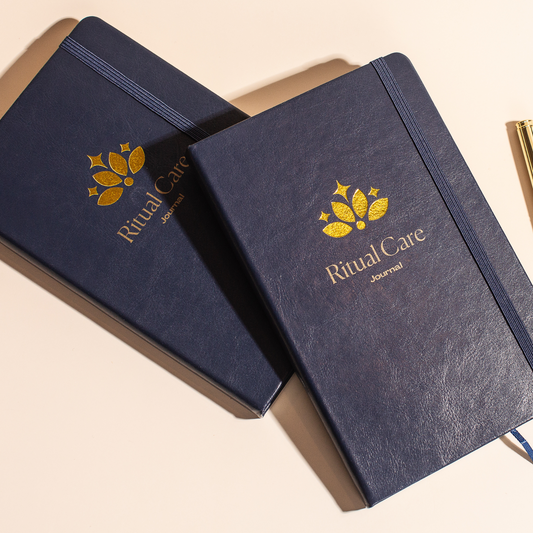We all want to feel grounded and content. Regardless of how much you have to be grateful for, you can feel like something’s missing—and anxiety, unhappiness, restlessness, and longing for something more sets in. It doesn’t mean you’re ungrateful; it means you’re human.
Neuroscience and social science research shows that most people possess something called optimistic bias or the tendency to think that the future will be much better than the present or that things will turn out better than perhaps they actually do. This bias serves a purpose: It keeps you moving forward instead of staying stagnant. To progress, you need to believe you can achieve better and feel motivated to try.
The challenge enters when you struggle to pause this mindset. Constantly looking forward and focusing on tomorrow to be better than today never truly allows you to just be and enjoy what’s happening today. Similar to optimistic bias is what Harvard psychologist Tal Ben-Shahar calls the arrival fallacy. In his book “Happier,” he talks about the false belief that arriving at the place you think you want to go or achieving a particular goal rarely makes you as happy as you expected. Then, to seek out happiness again, you often replace the first goal with a new one, and the cycle continues.
Harvard psychologists Matthew Killingsworth and Daniel Gilbert discovered that people are actually most content when thoughts and actions align. Getting your body and mind back together—right here, right now—isn’t always easy, especially in your busy life that oftentimes requires multitasking and going at record speed.
That’s where meditation comes in to help. Meditation is a set of techniques intended to encourage a heightened state of awareness and focused attention on the present moment. There are many forms, including Primordial Sound Meditation, mindfulness-based stress reduction, Zen, transcendental, Kundalini, and walking meditation. Let’s take a closer look at the latter.
You may find it easier to be more aware of your body during a walking meditation than a sitting meditation. When you’re moving instead of sitting (and if you’re paying attention), you will feel sensations in your body—your feet repeatedly touching the ground, your arms gently swinging back and forth, and so on.
Remember that quote as you approach the practice. You aren’t trying to get anywhere. You’re already there. That might actually be the toughest part—to truly let go, and just walk and breathe—because you may tend to spend your days rushing around, trying to get to somewhere. Although you will literally be moving from one spot to another because you’re walking forward, it really doesn’t matter where or how far you go. You’re not trying to hit a number of steps or anything else your fitness devices track for you. In fact, you don’t need your devices at all, unless you prefer a guided walking meditation and, in that case, you can use an app, such as Headspace. Here, we’re going to focus on a self-guided meditation while walking.
Where you choose to practice is completely up to you. Most people, particularly beginners, prefer to practice walking meditation in a natural environment where they won’t be distracted, like a trail, park, by an ocean or lake, or somewhere else that’s free of traffic and other interruptions. Dress comfortably—nothing too tight or constricting. To begin:
If you don’t have any health challenges that would prevent you from taking a stroll, give walking meditation a try and see if it helps you root down into the present moment, and feel a greater sense of joy and peace overall.
*Editor’s Note: The information in this article is intended for your educational use only; it does not necessarily reflect the opinions of the Chopra Center's Mind-Body Medical Group; and is not a substitute for professional medical advice, diagnosis, or treatment. Always seek the advice of your physician or other qualified health providers with any questions you may have regarding a medical condition and before undertaking any diet, supplement, fitness, or other health programs.
Neuroscience and social science research shows that most people possess something called optimistic bias or the tendency to think that the future will be much better than the present or that things will turn out better than perhaps they actually do. This bias serves a purpose: It keeps you moving forward instead of staying stagnant. To progress, you need to believe you can achieve better and feel motivated to try.
The challenge enters when you struggle to pause this mindset. Constantly looking forward and focusing on tomorrow to be better than today never truly allows you to just be and enjoy what’s happening today. Similar to optimistic bias is what Harvard psychologist Tal Ben-Shahar calls the arrival fallacy. In his book “Happier,” he talks about the false belief that arriving at the place you think you want to go or achieving a particular goal rarely makes you as happy as you expected. Then, to seek out happiness again, you often replace the first goal with a new one, and the cycle continues.
Harvard psychologists Matthew Killingsworth and Daniel Gilbert discovered that people are actually most content when thoughts and actions align. Getting your body and mind back together—right here, right now—isn’t always easy, especially in your busy life that oftentimes requires multitasking and going at record speed.
That’s where meditation comes in to help. Meditation is a set of techniques intended to encourage a heightened state of awareness and focused attention on the present moment. There are many forms, including Primordial Sound Meditation, mindfulness-based stress reduction, Zen, transcendental, Kundalini, and walking meditation. Let’s take a closer look at the latter.
What Is Walking Meditation?
Walking meditation, also called kinhin or mindful walking, is a moving meditation from the Buddhist tradition. You keep your eyes open and use the experience of walking as the focal point. Unlike some other forms of mindfulness and meditation, where you focus on the breath, mindful walking meditation encourages you to breathe without effort.You may find it easier to be more aware of your body during a walking meditation than a sitting meditation. When you’re moving instead of sitting (and if you’re paying attention), you will feel sensations in your body—your feet repeatedly touching the ground, your arms gently swinging back and forth, and so on.
Benefits of Walking Meditation
Walking, in and of itself, boosts heart health, improves circulation, burns calories, and contributes to a host of other health benefits. However, when you add the meditation aspect, it comes with an array of other advantages for your health and well-being. Connecting the mind and body to the present moment is the biggest benefit, and these are some others:- Deeper connection to the environment: Thich Nhat Hạnh, who is a Buddhist monk and peace activist, believes that walking meditation is a way to connect more deeply with the earth. He doesn’t see the earth as merely an environment in which you live. He sees the earth as a bodhisattva, a being that has great compassion, understanding, awakening, and love. He says that every mindful step during walking meditation can manifest that love.
- Anxiety reduction: Researchers have shown that walking meditation can reduce anxiety. Walking meditation helps because it removes you from the mental and physical spaces where you’re anxious, allows you to release pent-up energy, and engages your whole body to redirect yourself to being present in the place where you’re walking instead of focused on your anxiety. In another study, meditating before or after walking also reduced anxiety in young adults.
- Depression support: Aerobic walking combined with meditation three times a week for 12 weeks reduced depression in a small group of older adults. Stress and anxiety are major causes of depression, and walking meditation can alter your reaction to thoughts and feelings. One characteristic of depression is thinking negatively about an experience or yourself. Mindful walking is a form of meditation that trains you to be aware of these thoughts and then simply allow them to pass through the mind without clinging to them.
- Improved concentration: The internet and the rapid-pace society may have an adverse effect on your ability to concentrate. Research reveals that mindful movement practices, such as walking meditation, yoga, and tai chi, may have tremendous benefits on attention span.
- Overall healing: Your body and your mind are interdependent. If you support one, you support the other. Marrying mindfulness and walking addresses the mind and body simultaneously to promote restoration of both.
How to Practice Walking Meditation
Mindful walking is the actualization of Ralph Waldo Emerson’s famous quote, “It’s not the destination, it’s the journey.”Remember that quote as you approach the practice. You aren’t trying to get anywhere. You’re already there. That might actually be the toughest part—to truly let go, and just walk and breathe—because you may tend to spend your days rushing around, trying to get to somewhere. Although you will literally be moving from one spot to another because you’re walking forward, it really doesn’t matter where or how far you go. You’re not trying to hit a number of steps or anything else your fitness devices track for you. In fact, you don’t need your devices at all, unless you prefer a guided walking meditation and, in that case, you can use an app, such as Headspace. Here, we’re going to focus on a self-guided meditation while walking.
Where you choose to practice is completely up to you. Most people, particularly beginners, prefer to practice walking meditation in a natural environment where they won’t be distracted, like a trail, park, by an ocean or lake, or somewhere else that’s free of traffic and other interruptions. Dress comfortably—nothing too tight or constricting. To begin:
- Stand with your feet planted on the ground and your hands in a relaxed position by your sides. Take a few deep inhalations and exhalations. Notice the feeling and sensation of your feet rooted into the ground.
- Breathe naturally.
- Allow your eyes to focus ahead of you and begin to walk slowly. As you practice more and more, you may find that you want to speed up. But start slow—your version of slow. You can take in as much of your peripheral environment as you want; however, be mindful to continue to focus on the fact that you’re walking and breathing. You don’t have to stare at your feet; they know where to go.
- Be aware of the sensations in your feet and whole body. With each step, maintain a soft body, good posture, and notice the heel-to-toe rhythm as each foot reaches the ground. Notice how your entire body feels, and how each breath feels going in and out of your lungs.
- Continue to guide your focus back to your steps and your breath. Your attention may drift. That’s OK. Take notice of your thoughts and emotions without judgment. Continue to redirect your mind back to the present, back to your breath and steps.
- Keep walking for at least 5 to 20 minutes. If you have more time and it feels comfortable, keep going. There isn’t a set amount of time that you have to do this. Do whatever works best for you.
- As your practice comes to a close, gently halt. Experience yourself standing still just as you did in the beginning. Take a few deep breaths, do a body scan, and notice how you feel. Do you feel more grounded, connected, present?
If you don’t have any health challenges that would prevent you from taking a stroll, give walking meditation a try and see if it helps you root down into the present moment, and feel a greater sense of joy and peace overall.
*Editor’s Note: The information in this article is intended for your educational use only; it does not necessarily reflect the opinions of the Chopra Center's Mind-Body Medical Group; and is not a substitute for professional medical advice, diagnosis, or treatment. Always seek the advice of your physician or other qualified health providers with any questions you may have regarding a medical condition and before undertaking any diet, supplement, fitness, or other health programs.






















